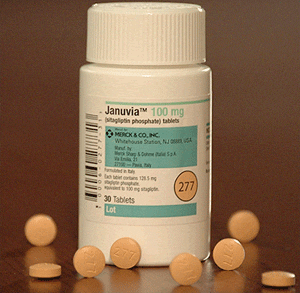 A position statement released by the Endocrine Society supports the use of central institutional review boards to encourage progress in clinical research and streamline regulatory review in multicenter trials.
A position statement released by the Endocrine Society supports the use of central institutional review boards to encourage progress in clinical research and streamline regulatory review in multicenter trials.
According to the statement, “Interdisciplinary research is critical to elucidate the mechanisms of a wide spectrum of endocrine disorders and diseases and to identify the effective treatments for them. Increased acceptance, accessibility and use of central [institutional review boards] could facilitate progress in clinical studies without reducing patient protection.”
The review process is currently slowed by regulations requiring clinical investigators to secure approval from multiple institutional review boards before they can begin studies that span several research centers. Waiting periods for approval can last a year or more as each individual institution conducts its own reviews and interviews researchers. Local biases and institutional demands can also hamper the process.
The safety of patients is still of utmost importance in conducting research. The Endocrine Society stated that it supports the following positions:
- Central institutional review boards should be accredited through a certification process, similar to the one offered by the Association for the Accreditation of Human Research Protection Programs (AAHRPP).
- Central institutional review boards should establish written agreements and encourage their use by investigators who are conducting studies across multiple research sites.
- The Office of Human Research Protections should ensure the protection of those using central institutional review boards and offer information on the implications of using those review boards.
- Professional organizations should encourage and promote the use of these central institutional review boards.
- The NIH should advocate for researchers to consider the use of central institutional review boards in proposals for investigator-initiated studies that will utilize multiple sites. Central institutional review boards should be required for use in studies solicited by the NIH and involving multiple research sites; this requirement should apply to all grant solicitations in the future.
“The number of approvals necessary to proceed with a multisite study that utilizes each site’s [institutional review board] may involve waiting periods of a year or more,” stated Janet E. Hall, MD, president of The Endocrine Society, in a press release. “This process delays the progress of the study, discourages the investigators involved and is highly cost-ineffective. The Endocrine Society strongly encourages the utilization of [central institutional review boards] for multicenter clinical studies in order to advance clinical research and improve patient care while maintaining the highest patient safety standards.”
The Endocrine Society was founded in 1916, then known as the Association for the Study of Internal Secretions. The organization studies endocrinology and metabolism, publishing four leading journals in its fields, including Endocrinology, Endocrine Review, Journal of Clinical Endocrinology and Metabolism, and Molecular Endocrinology. The Society’s mission is “to advance excellence in endocrinology and promote its essential and integrative role in scientific discovery, medical practice, and human health.”
Over 14,000 members belong to the Society, from 85 countries around the world. It holds an annual post-graduate assembly called the Clinical Endocrinology Update, speaking to members about the importance of endocrinology and its implications for medicine as a whole.
The Endocrine Society also sponsors Sister Societies whose members correspond via the Endocrine Society. Sister societies include the American Diabetes Association, the American Association of Clinical Endocrinologists, the American Thyroid Association, and the Obesity Society.
For more information on the Endocrine Society, visit http://www.endo-society.org.
 This September, schools and moms will have a little more incentive to give their children flavored milks: according to the Milk Processor Education Program, that’s when calories and sugar will be reduced in these kid-favorite flavored milks.
This September, schools and moms will have a little more incentive to give their children flavored milks: according to the Milk Processor Education Program, that’s when calories and sugar will be reduced in these kid-favorite flavored milks. Software developer drchrono recently made waves when it released an electronic health care management app for the iPad, which then received ONC-ATCB certification. Now the developer has continued its work in the mobile space, releasing an iOS app designed to replace paper-based patient check-ins at physicians’’ offices.
Software developer drchrono recently made waves when it released an electronic health care management app for the iPad, which then received ONC-ATCB certification. Now the developer has continued its work in the mobile space, releasing an iOS app designed to replace paper-based patient check-ins at physicians’’ offices. A research team at the Joslin Diabetes Center has discovered that an enzyme located in cell mitochondria is less common in the skeletal muscle of diabetes. The discovery could pave the way for the development of
A research team at the Joslin Diabetes Center has discovered that an enzyme located in cell mitochondria is less common in the skeletal muscle of diabetes. The discovery could pave the way for the development of  According San Antonio Heart Study’s latest paper, published in the Annals of Epidemiology, diabetes is more deadly in Mexican Americans than in Anglos. And for diabetics who live in Mexico, their chances are even worse.
According San Antonio Heart Study’s latest paper, published in the Annals of Epidemiology, diabetes is more deadly in Mexican Americans than in Anglos. And for diabetics who live in Mexico, their chances are even worse. Diabetics may need to pay careful attention to their
Diabetics may need to pay careful attention to their  It’s not often that a “wonder drug” appears, claiming to cure a range of diseases and
It’s not often that a “wonder drug” appears, claiming to cure a range of diseases and  Young adulthood is a time when most people are less concerned about their weight. Their metabolisms are still relatively fast, they may be more active, and they haven’t encountered physical problems that prevent them from getting regular exercise. Yet obesity is a problem for young adults just as much as their elders, and researchers have found that it may be hurting them in more than just the mirror; a high body mass index raises an individual’s chance of dying early by 21%, while those who maintain healthy weights at age 25 are more likely to live longer and healthier lives.
Young adulthood is a time when most people are less concerned about their weight. Their metabolisms are still relatively fast, they may be more active, and they haven’t encountered physical problems that prevent them from getting regular exercise. Yet obesity is a problem for young adults just as much as their elders, and researchers have found that it may be hurting them in more than just the mirror; a high body mass index raises an individual’s chance of dying early by 21%, while those who maintain healthy weights at age 25 are more likely to live longer and healthier lives. Thiazolidinediones for Bone Health” width=”300″ height=”293″ />Thiazolidinediones are suspected to have an adverse effect on bone density and to increase the risk of bone fracture in patients with diabetes. However, there have been no randomized studies showing that antiresorptive drugs would protect bone health in these settings.
Thiazolidinediones for Bone Health” width=”300″ height=”293″ />Thiazolidinediones are suspected to have an adverse effect on bone density and to increase the risk of bone fracture in patients with diabetes. However, there have been no randomized studies showing that antiresorptive drugs would protect bone health in these settings. Prescription drugs are meticulously studied and investigated to determine not only their safety for use by the public but also their effectiveness.
Prescription drugs are meticulously studied and investigated to determine not only their safety for use by the public but also their effectiveness.